
NEW CARBON MATERIALS
Scope & Guideline
Leading the Charge in Carbon Material Advancements
Introduction
Aims and Scopes
- Synthesis of Carbon Materials:
Research articles frequently explore innovative methods for synthesizing various forms of carbon, including nanostructures, composites, and porous materials, aimed at enhancing their properties for specific applications. - Characterization Techniques:
The journal publishes studies that utilize advanced characterization techniques such as Raman spectroscopy, FTIR, and electron microscopy to analyze the structural and chemical properties of carbon materials. - Applications in Energy Storage:
A significant focus is placed on the application of carbon materials in energy storage devices such as lithium-ion batteries, sodium-ion batteries, supercapacitors, and fuel cells, highlighting their performance improvements and efficiency. - Catalysis:
Many publications emphasize the role of carbon-based materials as catalysts or catalyst supports in various chemical reactions, including CO2 reduction, hydrogen evolution, and organic transformations. - Environmental Applications:
The journal also addresses the environmental applications of carbon materials, including their use in water treatment, pollutant adsorption, and as components in renewable energy technologies.
Trending and Emerging
- Electrocatalysis and Energy Conversion:
A growing number of studies focus on the use of carbon-based materials in electrocatalytic processes, particularly for hydrogen evolution, CO2 reduction, and fuel cells, highlighting their potential in energy conversion technologies. - Biomass-Derived Carbon Materials:
Research on carbon materials derived from biomass is on the rise, reflecting a broader interest in sustainable and eco-friendly materials that can replace traditional fossil fuel-derived carbon sources. - High-Performance Energy Storage Systems:
There is an increasing emphasis on developing carbon materials for high-performance energy storage systems, particularly for lithium-ion and sodium-ion batteries, as well as supercapacitors, addressing the demand for better energy density and cycling stability. - Advanced Characterization Methods:
Emerging techniques for characterizing carbon materials, such as in-situ spectroscopy and advanced microscopy techniques, are gaining popularity, enabling deeper insights into the properties and behaviors of carbon materials under operational conditions. - Hybrid and Composite Materials:
The trend towards hybrid and composite materials that combine carbon with other nanomaterials to enhance properties and functionalities is becoming more pronounced, indicating a shift towards multifunctional applications.
Declining or Waning
- Traditional Coal-Based Materials:
Research on traditional coal-based carbon materials is decreasing, likely due to the growing interest in more sustainable and novel sources of carbon, such as biomass and synthetic alternatives. - Graphene and Graphene Derivatives:
Although still relevant, the frequency of papers solely focused on graphene has declined as the field shifts towards exploring more complex carbon structures and composites that incorporate graphene for enhanced functionality. - Low-Performance Carbon Composites:
There is a noticeable reduction in studies focusing on low-performance carbon composites, as researchers increasingly prioritize high-performance, multifunctional materials that can meet the demands of advanced applications.
Similar Journals

Inorganic Chemistry Frontiers
Pioneering Research in Inorganic ChemistryInorganic Chemistry Frontiers, published by the esteemed Royal Society of Chemistry, stands at the forefront of advancements in the field of inorganic chemistry, boasting a prestigious Q1 ranking in its category as of 2023 and an impressive Scopus Rank of #3 out of 79, placing it in the 96th percentile. Since its inception in 2014, this journal has provided a robust platform for high-quality research that spans the diverse and rapidly evolving areas of inorganic chemistry. As an open-access journal, it ensures that the findings presented are readily accessible to researchers, educators, and practitioners globally, fostering an inclusive environment for the dissemination of knowledge. With its rigorous peer-review process, Inorganic Chemistry Frontiers aims to facilitate interdisciplinary dialogue and innovation, making it an essential resource for anyone dedicated to exploring the myriad applications and theoretical advancements within inorganic chemistry.
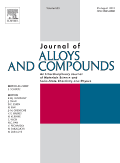
Journal of Alloys and Compounds
Transforming Knowledge into Material SolutionsJournal of Alloys and Compounds, published by Elsevier Science SA, stands at the forefront of materials research, focusing on the properties, applications, and innovations within alloys and compounds. With an impressive impact factor and prestigious rankings placing it in the Q1 quartile across multiple related categories—including Materials Chemistry, Mechanical Engineering, and Mechanics of Materials—this journal is recognized for its significant contributions to the field. Researchers and professionals engaged in metallurgy, materials science, and engineering will find it a critical resource that encompasses groundbreaking studies, insightful reviews, and essential findings. The journal has a strong influence, as evidenced by its Scopus rankings—ranking 14th in Metals and Alloys and 28th in Mechanics of Materials, indicating a robust global impact. As it continues to publish cutting-edge research from 1991 to 2024, the Journal of Alloys and Compounds serves as a vital platform for the exchange of knowledge, thereby advancing our understanding of complex materials and fostering innovation in diverse applications.
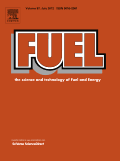
Fuel
Unleashing Potential in Chemical Engineering and EnergyFuel is a premier international journal published by Elsevier Science Ltd, showcasing critical advancements and insights in the fields of chemical engineering, energy engineering, power technology, and organic chemistry. With a significant history dating back to 1922 and continuous publication from 1970 to 2025, Fuel holds an impressive position in the academic community, reflected in its top-tier rankings—Q1 in multiple categories including Fuel Technology and Chemical Engineering for the year 2023. This journal is dedicated to exploring innovative research and application of fuel technologies, driving forward the dialogue on sustainable energy solutions. Researchers and professionals alike will find Fuel to be an essential resource, providing access to high-impact articles that contribute to advancements in methodologies and applications, while navigating the complexities of global energy challenges.
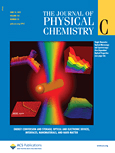
Journal of Physical Chemistry C
Advancing the frontiers of materials science.The Journal of Physical Chemistry C, published by the American Chemical Society, stands as a pivotal resource in the realm of materials science and physical chemistry. With an impact factor reflecting its esteemed reputation, this journal showcases high-quality research spanning topics such as electronic, optical, and magnetic materials, as well as nanoscience and nanotechnology. Hailing from the United States, it operates without an open access model, yet its contributions are critical for advancing our understanding of surfaces, coatings, and films. Notably, the journal is classified in Quartile 1 (Q1) for several categories, underscoring its prominence in Physical and Theoretical Chemistry and related fields. Researchers, professionals, and students alike will find value in the comprehensive discussions and innovative research trends presented. The scholarly articles published from 2007 to 2024 not only drive forward scientific inquiry but also inform practical applications in various industries, making this journal an essential tool for anyone committed to excellence in the sciences.

TRANSACTIONS OF TIANJIN UNIVERSITY
Empowering knowledge exchange across diverse disciplines.TRANSACTIONS OF TIANJIN UNIVERSITY, published by SpringerNature, is a premier journal in the field of multidisciplinary research, boasting an impressive Q1 ranking and placing within the top 93rd percentile of its category according to Scopus. With an ISSN of 1006-4982 and E-ISSN of 1995-8196, this journal facilitates insightful and innovative contributions that span various disciplines, making it a vital resource for academics and professionals alike. Established in 2004, the journal continues to thrive with a commitment to advancing knowledge and fostering collaboration in scientific inquiry. TRANSACTIONS OF TIANJIN UNIVERSITY aligns with global research trends and offers a platform for the dissemination of high-quality research findings, promoting interdisciplinary approaches to solving complex problems. Located in China, its influence extends well beyond national borders, appealing to a diverse readership eager to explore the latest advancements and discussions in the multidisciplinary arena.

Journal of Ovonic Research
Catalyzing Innovations in Surface and Coating Technologies.Journal of Ovonic Research is a distinguished publication dedicated to advancing the fields of electronic, optical, and magnetic materials. Published by VIRTUAL CO PHYSICS SRL, this journal offers a platform for researchers to share innovative findings and developments that push the boundaries of technology and materials science. With an ISSN of 1842-2403 and an E-ISSN of 1584-9953, it provides an important service to the academic community, particularly within Romania and beyond. Despite its recent inception in 2011, the journal has gained traction in the academic landscape, reflecting a Q4 quartile ranking in crucial categories such as Electronic, Optical and Magnetic Materials, as well as in Physics and Astronomy. The Scopus rankings further underscore its positioning, ranking within the 25th to 37th percentile across various disciplines, making it a valuable resource for professionals and students alike. Although the journal currently operates on a non-open access basis, it remains committed to exploring the latest advancements in materials science, encouraging interdisciplinary collaboration and fostering a deeper understanding of surface, coating, and film technologies. As the field evolves, Journal of Ovonic Research stands as a beacon for scholarly communication, bridging the gap between research and practical application.
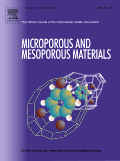
Microporous and Mesoporous Materials
Fostering Breakthroughs in Nanoscience and EngineeringMicroporous and Mesoporous Materials is a leading academic journal published by ELSEVIER, specializing in the field of porosity characterization and applications of microporous and mesoporous materials. With an impactful Q1 ranking in various categories, including Chemistry, Condensed Matter Physics, and Materials Science, this journal serves as a vital resource for researchers, professionals, and students focused on advancing the understanding and application of these materials. Established in 1998 and set to continue its influence until 2024, the journal's rigorous peer-review process ensures the dissemination of high-quality research findings. Additionally, its commitment to open access publishing broadens accessibility, fostering an inclusive community dedicated to innovation in nanoscience, materials physics, and engineering. The journal's Scopus rankings highlight its prestigious standing, placing it among the top percentile within pertinent fields. For those engaged in cutting-edge research or education within these sectors, Microporous and Mesoporous Materials remains an essential journal for current advancements and insights.

C-Journal of Carbon Research
Advancing Carbon Science for a Sustainable FutureC-Journal of Carbon Research is an innovative and dynamic journal published by MDPI, situated in the picturesque city of Basel, Switzerland. Launched in 2015 and operating under an Open Access model, the journal aims to promote the dissemination of high-quality research related to carbon science, environmental sustainability, and renewable resources. With a current impact factor reflecting its growing influence in the field, the journal's standing is bolstered by its Scopus ranking, placing it in the 37th percentile in the Environmental Science category. It offers a platform for researchers, professionals, and students alike to engage with cutting-edge studies, reviews, and discussions that contribute to environmental science advancements. As the journal continues its convergence journey from 2022 to 2024, it remains committed to fostering scholarly exchange and interdisciplinary collaboration on pressing carbon-related challenges.

Energy & Environmental Materials
Pioneering Solutions for a Sustainable TomorrowEnergy & Environmental Materials, published by WILEY, is an esteemed academic journal dedicated to pioneering research in the multifaceted domains of energy, environmental science, and materials science. Since its inception in 2018, this journal has rapidly established itself as a leading platform, holding a prestigious Q1 ranking across multiple categories including Renewable Energy, Sustainability, and Waste Management, reflecting its significant contributions to advancing knowledge in these critical areas. With a robust Scopus ranking that positions it in the top percentile for Environmental Science and Materials Science, it caters to a diverse audience of researchers, professionals, and students seeking cutting-edge findings and practical applications in energy efficiency and sustainable materials. This open-access journal facilitates the dissemination of innovative research and aims to bridge the gap between scientific exploration and real-world solutions for a sustainable future. The editorial team encourages submissions that explore both theoretical and practical aspects, ensuring that every publication not only contributes to the academic landscape but also drives impactful change in energy and environmental practices.
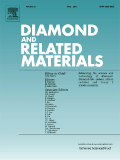
DIAMOND AND RELATED MATERIALS
Elevating the discourse on cutting-edge materials.DIAMOND AND RELATED MATERIALS, published by Elsevier Science SA, serves as a premier international platform for the dissemination of high-quality research in the fields of materials science, electrical engineering, and chemistry, with a specialized focus on diamond and its related materials. With an ISSN of 0925-9635 and an E-ISSN of 1879-0062, this journal has established itself within the top quartiles, reflecting its influential contribution to the scientific community, particularly in the categories of Chemistry (miscellaneous) and Electrical Engineering, among others. The journal's wide scope encompasses both theoretical and applied aspects of diamond research, making it an essential resource for professionals and academics alike. The current rankings position it favorably within its respective disciplines, with a notable 79th percentile in General Physics and Astronomy and strong standings in related categories. Although it does not offer open access, researchers can stay informed of cutting-edge advancements and methodologies through its comprehensive articles and reviews, enriching the wider discourse in advanced materials research.